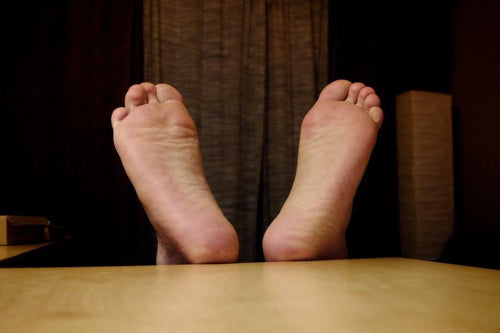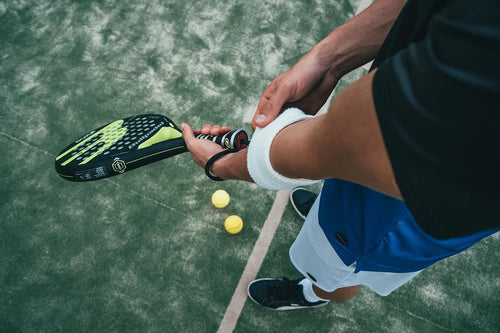Remember the time when you took a long walk outdoors and ended up with sore feet and tired legs?
When you walk, you roll your feet on the ground through every step. But if your footwear is too stiff, you slap your feet on the ground, which leaves you with a bad posture and pains.
The right walking shoes on your feet will allow you to use your feet muscles from heel to toe. Lightweight flexible shoes help you prevent injuries such as sores and blisters.
Nonetheless, not all walking shoes are made with flexibility and comfort in mind.
Keep reading to find out what makes walking shoes flexible enough, and if there is such a thing as too flexible.
Why Should You Go for Flexible Shoes?
Walking with shoes is different from walking barefoot.
When you are barefoot, your feet roll against the ground, which engages your foot and leg muscles. In shoes, you are pressing against a solid sole, which means your feet are doing less work.

While lesser work might sound pleasing, a study shows that no or minimal footwear increases the strength and stiffness of the feet. The shoes that mimic bare feet by discarding modern arch support along with a thin and flexible sole allow your feet to “roll” on the ground, making them stronger.
Unsurprisingly, weaker feet are vulnerable to problems such as a flat fleet. Flat feet or fallen arches is a deformity in which the bottom of the foot loses its arch and falls close to the ground.
Research links flat feet to knee pain and cartilage damage. Ouch.
Due to these reasons, some people turn towards athletic and waterproof walking shoes for a modern design and a minimalist approach.
A study based over six months of examination shows that lightweight flexible shoes put 7% to 15% less stress on the knee than less flexible shoes with higher heels.
Despite all that, the trend of flexible shoes these days can take flexibility way too far. If you are walking for longer distances or hiking, you need more support than an ultra-minimalist shoe can provide.
For older walkers, some proper cushioning is also necessary to protect and support the feet a little more.
On the whole, the ideal walking shoes will give you decent flexibility and comfort without overdoing it. Since you will be using them for all kinds of activities, waterproof walking shoes made of flexible and breathable materials are the way to go.
What Makes Walking Shoes Flexible?
Lightweight flexible shoes mimic the natural curvature of our feet, providing excellent shock absorption and comfort. However, no two shoes are made the same.
Here are some features that make walking shoes flexible and comfortable.
1- Upper
Upper is the top part of the shoe that holds it to your feet. It is usually made out of leather or mesh to allow better airflow and lighter design.

Go for waterproof walking shoes such as Loom footwear that feature a breathable knit layer and keep your feet fresh in every season. The breathable surface keeps you comfy while offering anti-odor and antibacterial properties to protect your feet against rashes and bad odor.
2- Cushioning
The insole and midsole provide cushioning and support to the arches of your feet. A good cushioning system minimizes pressure on the feet to prevent discomfort and foot pains.
When you are doing high impact workouts or hiking, the cushion supports the arches and stabilizes your feet so you can lead an active lifestyle.
3- Outsole
Outsoles are the bottom soles of the shoes that touch the ground. The grooves and cuts in the sole cause friction, which helps you maintain a firm grip.
4- Heel Collar
Heel collar supports your ankles and makes sure the shoe fits your foot properly.
5- Toe Box
A roomy toe box provides space for your toes, preventing calluses and other injuries.
More Features to Look for
Here are a few additional features to look for.
● Achilles Tendon Support
Achilles tendon protector reduces stress on the specific tendon by allowing the shoe to fit snugly around the heel.
● Low Heel
Walking shoes should have a low heel, no more than an inch high than the front of the sole. Some running shoes have heel drop measurements that range from 0 to 14mm.
Go for shoes with heel drops in the range of 0 to 10mm, but make sure you are getting enough flexibility and comfort.
● Avoid Flared Heel
You don’t want flared heels on your walking shoes, as less heel will let you roll your feet on the ground with each stride.
How Do You Know if Your Shoes Are Flexible Enough?
So, lightweight flexible shoes are comfortable and suitable for running. But, how do you tell if a pair has perfect flexibility for your feet?

Here are a few tricks to test if your shoe is flexible enough:
1- Tap the toe
Put your shoe on a leveled surface, such as a table. Tap the front part of the shoe down, and see if the heel rises from the surface. The bottom of the shoe that follows the curve of the feet will mimic bare feet and let you roll through every step.
2- Bend the Shoe
Turn the heel towards the toe of the shoe. It should NOT bend from the middle or halfway through the arch.
One which follows the natural curves will bend at the ball of the foot. It is the area between your toes and arch at the bottom of your feet.
3- Twist the Shoe
Hold the shoe from both ends and twist it. If the shoe fully spins around, it is way too flexible for walking.
Know Your Feet
Now that you know flexibility is crucial, the next question to ask is: Do the shoes fit the shape of my feet?

The structure of the feet plays a significant role in the level of comfort the shoes will provide.
However, there is no perfect shoe for an arch type, so a good fit should be your priority. Always make sure that the shoe pair adapts to your foot shape, and not vice versa.
1- Foot Size
Before buying a pair of walking shoes, make sure you are wearing the correct shoe size.
A wrong shoe size tends to be too snug or too loose, causing inflexibility and injures like sores and calluses. Apart from that, bad or no cushioning inside the shoes can also leave you with sore toes and tired legs.
Even the toe box in the shoe holds importance, as crammed up toes can cause pains and disorders like a bony bump.
2- Arch Type
The complex structure of bones, muscles, and tendons form curves in our feet. When you walk, the flexible arches at the bottom spring and fall with each step, and evenly distribute your body weight.
Typically, all feet arches fall into one of the following arch types.
● Neutral Arch
Neutral arched feet fall between high arch feet and flat arch. These arches form standard feet that roll to a healthy point.
If you have neutral arched feet, go for shoes with stable midsoles, average hindfoot stability, and partly curved lasts — the mold around which the shoe is made.
● Low Arch
Low-arched or flat feet refer to collapsed foot arches, with the sole almost touching the ground. About 20-30% of individuals have these arches that never fully develop.
Low arches can cause muscle tightness and joint pains in some people. If you have flat feet, you might want to opt for shoes with a straight last, and more cushioning along with better support to improve stability.
● High-Arch
High-arched feet are not very good at absorbing shocks or impact and may cause joint and muscle strains. If you have high arches, look for appropriate cushioning and a curved last that will provide shock absorption.
Find Your Perfect Pair
You can see clear evidence that flexible shoes can minimize the risks of foot injury by mimicking the natural curves of the human feet. The perfect fit pair for you will give you enough flexibility to protect your ankles and knees while giving you support on rough terrains.
One such option is the Loom Footwear sneakers for men and women. These waterproof walking shoes are built of high-quality Merino wool for maximum comfort.

Furthermore, they feature an excelcast outsole that absorbs shocks, making them impact-resistant.
You will find Loom sneakers to have all the qualities of a flexible shoe which can resist rain, mud, and rough surfaces without leaving your feet dirty or sore for days.
We love the Merino wool lined cushioning in these lightweight flexible shoes, which minimize pressure on your feet by stabilizing every stride. It prevents any foot pains and discomfort to your feet and legs, even after a whole day of hiking.
Summary
Wrapping up our article, you should go for lightweight flexible shoes to roll your feet on the ground instead of slapping them.
You can get a comfy fit by making sure your next pair has every feature that makes a shoe breathable and flexible. The features are correlated to the level of comfort your feet will experience.
You can check out Loom Footwear to see a perfect pair of flexible shoes. If your shoes don’t meet the flexibility criteria, its time to make a change.





